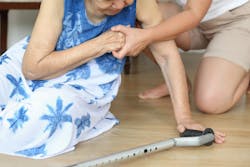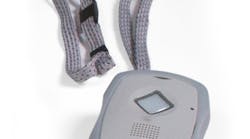According to the Center of Disease Control and Prevention (CDC), one out of three adults aged 65 and older falls each year; in fact, falls are the leading cause of injury-related death, non-fatal injuries and trauma hospitalization among this age group. Fall-related hospital admissions of older adults is a significant financial burden to worldwide health services. The CDC estimates the direct annual medical costs of falls totaled more than $19 billion – $179 million for fatal falls and $19 billion for non-fatal fall injuries.
Quick response to a fall can vastly improve a patient’s outcome from a health perspective, while helping more seniors age comfortably in place and lowering medical costs. That makes a reliable and immediate fall detection system vital for the security industry to embrace and offer.
Fall Detection and Aging in Place
One of the leading solutions for emergency health response should be familiar to most residential security integrators – Personal Emergency Response Systems (PERS). Many of these systems require the elderly person to push a button in case of emergency – either fixed on a wall or on a pendant worn around the neck – which often confines the person to their home, and may not work in the case of lost consciousness.
This is where fall detection-enabled wearables come into play. Thanks to advancement in mobile technology, small and light-weight wearable devices can be developed for the specific purpose of monitoring for fall detection, and it can be integrated into traditional PERS pendants. This technology can capture motion quickly and accurately analyze it, decide if it is a real fall, and then call for help if a fall has occurred.
The science behind this technology was not easy to achieve. A fall detection-enabled wearable device must continuously gather enormous amounts for data, apply sophisticated algorithms to filter out normal motion, and capture just the right event within a few short seconds.
Accuracy can be further enhanced by relaying the captured motion across an enhanced cellular network to a cloud-based platform for comparative analysis against actual human fall profiles.
This method has proven to be highly reliable in fall detection, while reducing false positive events. While the primary objective is focused on capturing the fall event, eliminating false positives that consume valuable monitoring response resources can be equally important.
Some fall detection-integrated and wearable PERS devices – such as Nortek’s Numera Libirs 2 – are equipped with GPS to pinpoint location and use motion sensors to automatically detect falls. If a fall is detected, the device initiates two-way communication with an emergency response center that in turn can send help to the exact location of the user.
AI Technology Meets PERS
The Nortek unit uses three motion sensors: tri-axial accelerometer, magnetometer and gyroscope, and uses artificial intelligence to determine if a fall has occurred. Fall-related features are extracted from the sensor data, and a machine learning algorithm is used to discriminate between falls and activities of daily living (ADL).
This method allows for adaptability and learning where new motions and variation of fall types are constantly added to a growing database. A unique database of elderly falls and ADL is being constructed, and the artificial intelligence system parameters are adapted accordingly.
Such AI-based algorithms will enable the future of aging place, including fall detection-enabled wearables that can tell if a fall is real – and if help is needed – without the need to push a button.
Jenny Sheep is Principle Architect and Algorithm Engineer for Nortek Security & Control’s Numera Fall Detection Solution. Learn more about the product at www.securityinfowatch.com/21094509.




